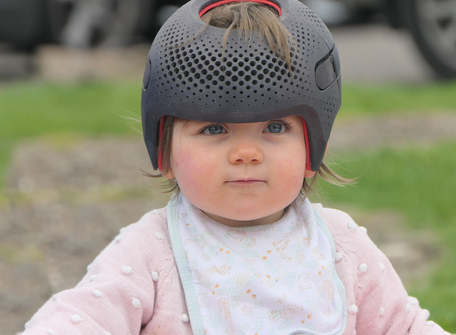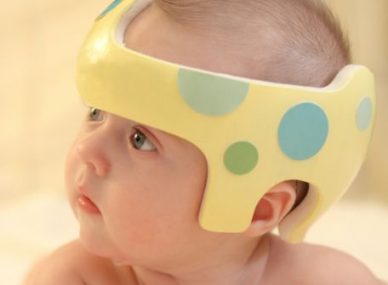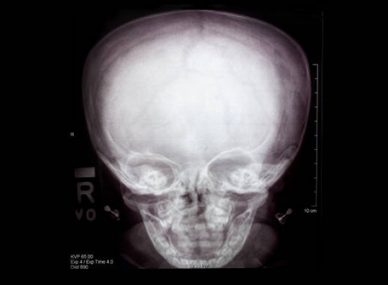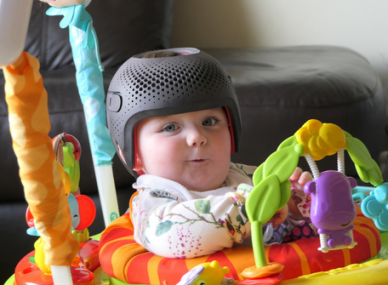A typical asymmetrical and unusually wide head shape can be treated safely and non-invasively with a plagiocephaly helmet therapy. As with teeth braces worn by older children and young adults, they do not interfere with development. Plagiocephaly helmets offer many benefits to your baby, and this post explores those benefits.
What is Plagiocephaly?
A baby with plagiocephaly has a significantly flatter skull on one side compared to the other side. In addition to brachycephaly, it is often referred to as ‘flat head syndrome’. One in two infants are reported to likely suffer from the condition.
During the first few years of life, the brain grows rapidly, which requires soft, impressionable skulls to facilitate passage through the birth canal. A positional plagiocephaly may develop when infants spend a lot of time sleeping with their heads in the same position due to external pressure exerted on the skull.
When parents and grandparents detect early signs of positional plagiocephaly, the condition can usually be reversed by repositioning the baby’s head away from the flattening as he or she plays, feeds, and sleeps. In order to minimize Sudden Infant Death Syndrome (SIDS) risk, babies must always be placed on their backs while sleeping.
Physiotherapy or osteopathy can be helpful in releasing tight muscles (torticollis) and allowing use of the full range of motion in the neck in infants with flattening.
About three out of four times, repositioning will restore a more normal shape to the head. In around 95 percent of cases, a custom-molded helmet can achieve a complete correction.
Helmet Therapy for Plagiocephaly
To promote even growth, helmet therapy applies gentle, continuous pressure to your baby’s developing skull throughout the day. It won’t hurt your baby, and once she gets used to it, it won’t interfere with her daily activities.
Designed with an accurate photographic scan of your baby’s head shape, the helmet is made of light foam with a semiflexible shell. Adjustments are made periodically to direct growth in the right direction.
At around four or five months of age, helmet therapy may be recommended if repositioning therapy has proven ineffective. To achieve the best results, the helmet must usually be worn for around five months, depending on the infant’s age and the severity of the plagiocephaly.
Benefits of a Plagiocephaly Helmet Therapy
There are several benefits to wearing a plagiocephaly helmet. Asymmetrical head shape and therefore more symmetrical facial features are achieved by using only this treatment, which is clinically proven.
Plagiocephaly is viewed by some as merely cosmetic and should be left to nature. Our society places immense pressure on individuals and especially children to blend in, which makes the need to look and feel ‘normal’ evident, not for vanity but to nurture healthy emotional and social development.
Children who undergo treatment will no longer feel the need to cover up their hair. As they grow up, they will be better prepared to participate in sports, activities and employment that require protective headgear.
The use of helmets may even reduce the risk of certain disorders associated with craniofacial asymmetry later in life. Plagiocephaly, for instance, can result in misaligned jaws, which can later lead to temporomandibular joint disorder (TMJ), a chronic condition that causes severe pain and speech difficulties in adults.
Plagiocephaly babies can benefit from helmet treatment by growing into happy, healthy children.
At Hope AMC Center, we have successfully treated thousands of babies with plagiocephaly helmet therapy. Visit our website for more information or call +971-529997075 to schedule a consultation.






3 Comments
RHESA MAE ARELLANO - SU
Hi. I wanted to inquire how much is it for the helmet therapy?
Muhammad Shafqat Jamil
Hi, I am worried about my son’s head shape. And I am thinking about helmet therapy. We tried different head shaping pillows but nothing really helped. He is almost 10 months old now.
Angelina Palma S a bado
I need to know better about the helmet